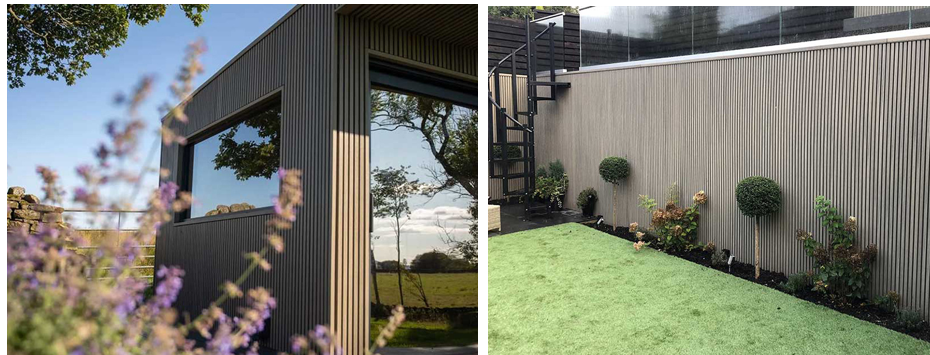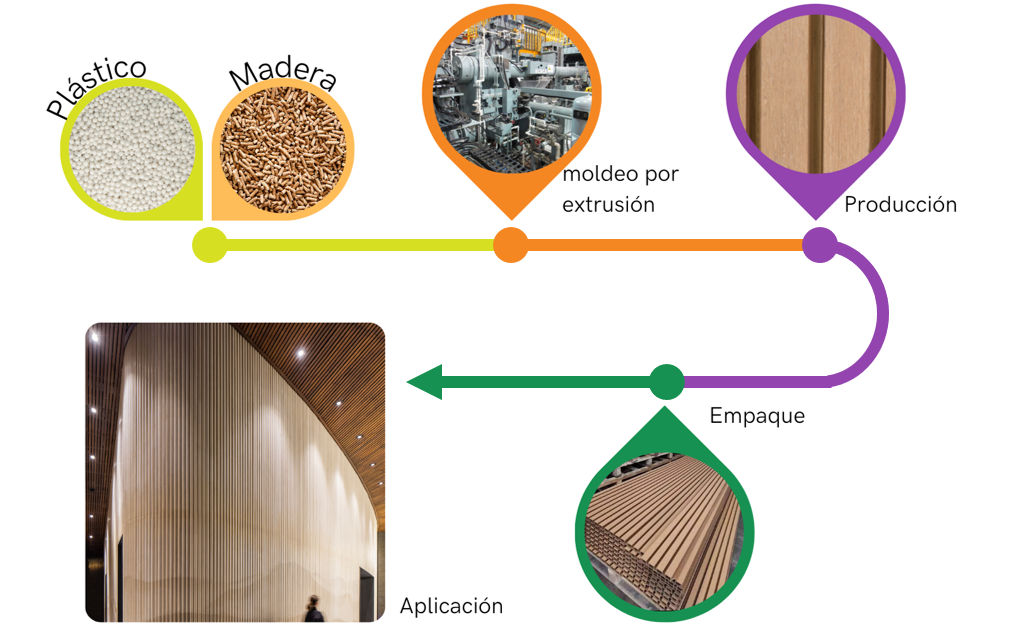Wood Plastic Composite WPC
Wood Plastic Composite, also known as WPC, is an innovation that we celebrate for its commitment to environmental care. In Spanish, it is also known as Compuesto de Madera y Plástico. It is a composite material made from a mixture of wood fibers or flour and thermoplastic resins, such as polyethylene (PE), polypropylene (PP), polyvinyl chloride (PVC), or polylactic acid (PLA). The proportion of wood and plastic in WPC can vary depending on the manufacturer and the specific application of the material.

Manufacturing of WPC (Wood Plastic Composite)
The manufacturing of WPC (Wood Plastic Composite) involves an industrial process that combines recycled wood with plastic resins to create a versatile and durable building material. The heated mixture is introduced into an extruder. The extruder is a machine that forces the mixture through a mold with the desired shape of the final WPC profile.
The extruded profile comes out of the machine and is moved to a cooling system to solidify the material; the profile is then cut to the desired length using saws or automatic cutters.
WPC can be planed, sanded, or treated with a surface layer to improve its appearance and durability.
Finally, it is stored in a protected place until its distribution and sale.
Uses: Decking, siding, railings, furniture, fencing, among others.
Applications: Indoors and outdoors.

Co-Extrusion Wall Panel:
The co-extrusion wall panel is a product that enhances the aesthetics of a space, generating a positive and welcoming impact to the eye. It is used as decoration for both exterior and interior, and its function is not only to beautify but also to protect. WPC wall panels are more attractive than traditional exterior walls due to their ecological properties and aesthetic appearance. WPC wall panels are made from recycled plastic and wood fibers, come in various colors, and are resistant to water, moisture, and insects. The wall panels do not rot or warp, so maintenance costs are very low, and they can improve thermal, acoustic, and natural light performance.



